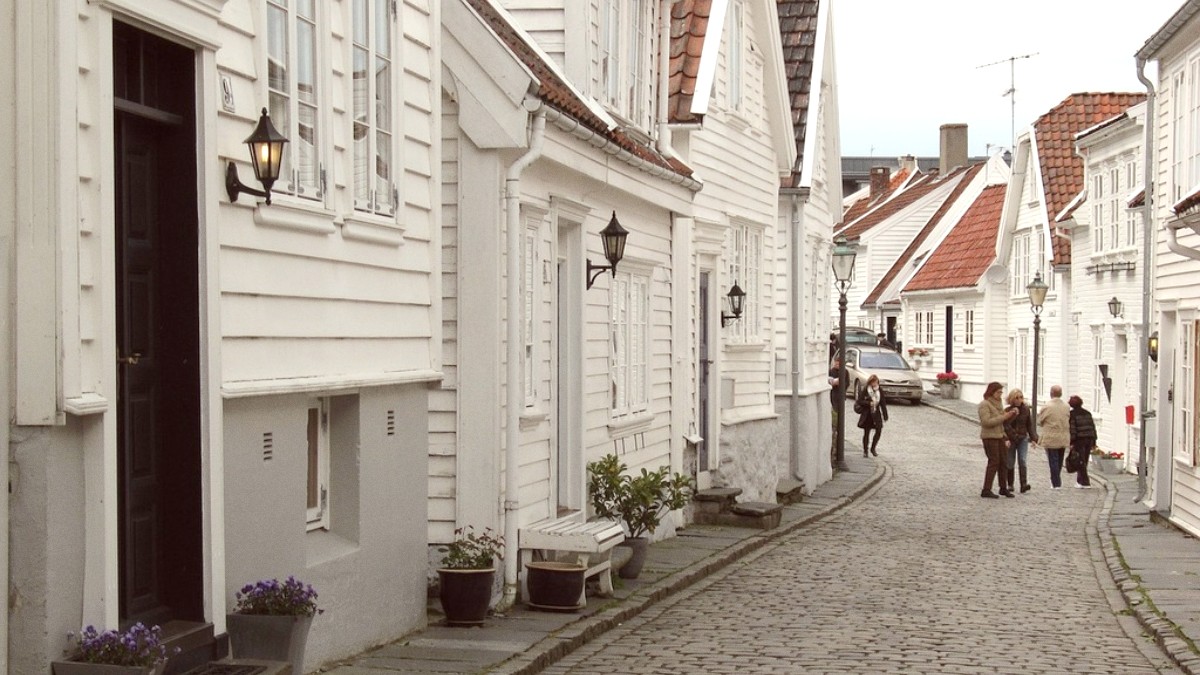
Bergen And The Western Fjords, Norway
Stavanger features a temperate oceanic climate (Cfb), with mild winters and cool summers. Rain occurs throughout the year, though summer months receive less precipitation. Temperatures in spring (April-May) are 5-12°C (41-54°F). Days lengthen, and the landscape blossoms. Summer (June-August) brings mildest temperatures, averaging 15-20°C (59-68°F), with long daylight hours. While the driest, rain remains common.
Autumn (September-October) temperatures drop to 8-15°C (46-59°F). Rainfall increases, and foliage changes colors. Winter (November-March) is mild for the latitude, averaging 0-5°C (32-41°F). Snowfall happens but often does not persist in the city. Daylight hours are short. Aurora Borealis sightings are uncommon here due to southern latitude and urban light.
High Season (June-August): Warmest weather, longest daylight. All attractions and hiking trails fully accessible (Preikestolen, Kjerag). Tourism services are fully operational.
Crowds are larger, and accommodation/tour prices are higher. Early booking is important. Shoulder Season (April-May, September-October): Fewer crowds and potentially lower prices. Natural scenery is beautiful. Preikestolen is accessible. Kjerag might still have snow in early spring or late autumn.
June-August
Warmest weather, longest daylight. All trails open, full services.
Higher prices, larger crowds. Booking ahead is important.
April-May, Sept-Oct
Fewer crowds, better prices. Beautiful scenery (blossoms/foliage).
Unpredictable weather. Some tours might be limited.
Nov-March
Lowest prices, minimal tourists. Winter sports possible if snow conditions are right.
Cold, short daylight. Many trails closed; limited fjord tours.
Stavanger's weather changes quickly year-round. Rain showers are frequent; carry waterproof outerwear. Coastal winds can bring a chill. Plan for layers to adapt to sudden temperature shifts.
Always check the local weather forecast before outdoor activities. YR.no (Norway's official weather service) delivers reliable forecasts.
Late May to early October for Kjerag. Preikestolen from April to October. Guided winter hikes are an option.
May to September for best weather and full schedules.
Enjoyable year-round. More pleasant in warmer months for outdoor cafes. Museums are available always.
Norway is part of the Schengen Area, a zone of 27 European countries without internal border control. Entry requirements depend on your citizenship.
Schengen Visa: Citizens from many non-EU/EEA countries need a Schengen visa for stays up to 90 days within any 180-day period. Apply at the Norwegian embassy, consulate, or a designated visa application center like IVisa or VisaHQ.
Norway imposes no general entry fees. Upon arrival, immigration procedures involve presenting your passport and visa (if applicable) to border control officers. They might ask about your trip's purpose and stay duration.
Norway is known for being expensive. Planning your finances is important.
Prices can fluctuate, especially in high season or during major events. Always check current prices before planning.
Stavanger and Norway uphold high public health and safety standards. Awareness of certain details makes for a worry-free trip.
No specific vaccinations are required for entry to Norway.
Routine vaccinations (MMR, DTP, Polio) should be current.
Consult your doctor for personalized recommendations.
Prevention
Cold/Flu: Wash hands often, avoid close contact. Minor injuries: Wear proper footwear for hiking. Blisters are common.
Sunburn: UV radiation can be strong; use Sun protection, High SPF sunscreen, Sunglasses, hat.
Ticks: Wear long pants/sleeves in wooded areas. Use Insect repellent. Check for ticks and remove promptly.
Norway has an excellent public healthcare system.
Tourists may pay upfront or use travel insurance. EHIC provides access for EU/EEA citizens.
Pharmacies (apotek) are well-stocked for minor ailments.
Stavanger is a very safe city with a low crime rate. Violent crime is rare. Petty crime is uncommon but can happen in crowded tourist areas.
Travel insurance is highly recommended. Ensure your policy covers specific activities. Read your policy carefully.
Cover medical emergencies, evacuation, trip cancellation. World Nomads is an option.
For hiking (Preikestolen, Kjerag), confirm policy covers these activities. Some exclude high-altitude trekking. Consider SafetyWing.
Read your policy carefully to understand what is covered. For US citizens, Insubuy also has options.